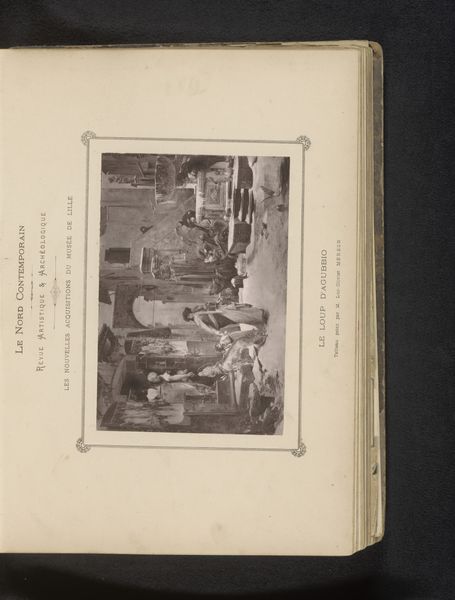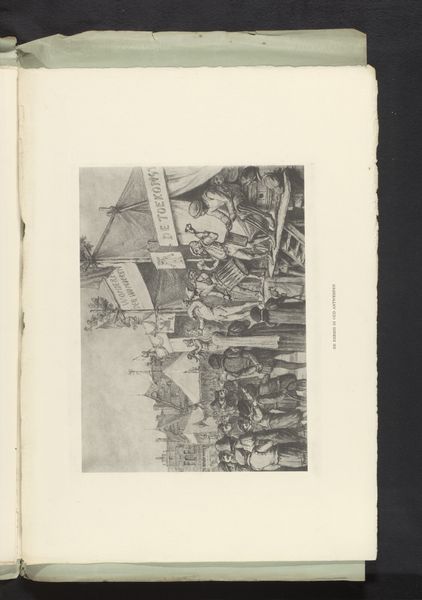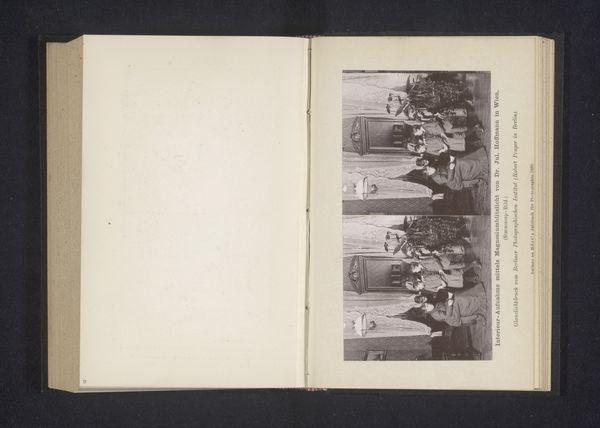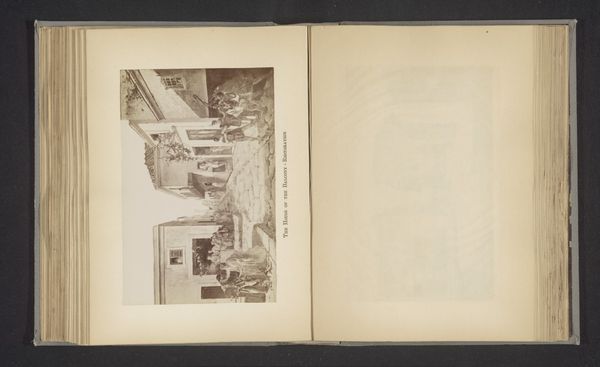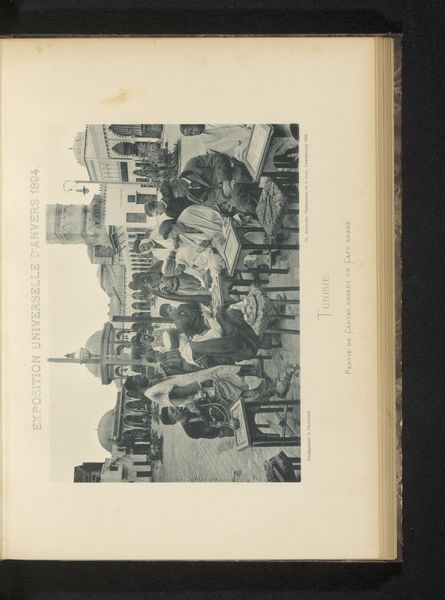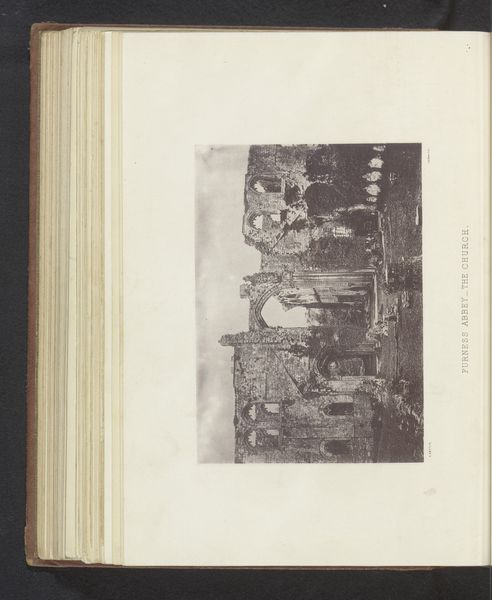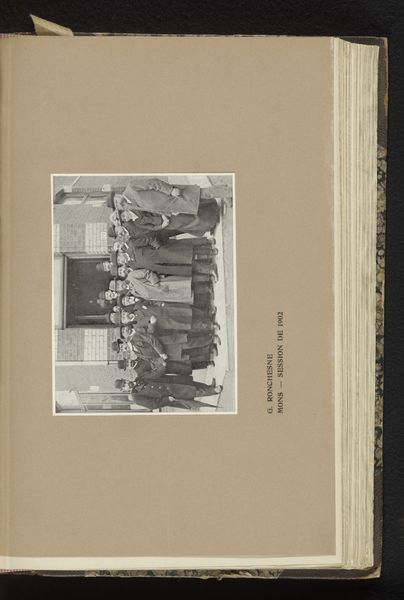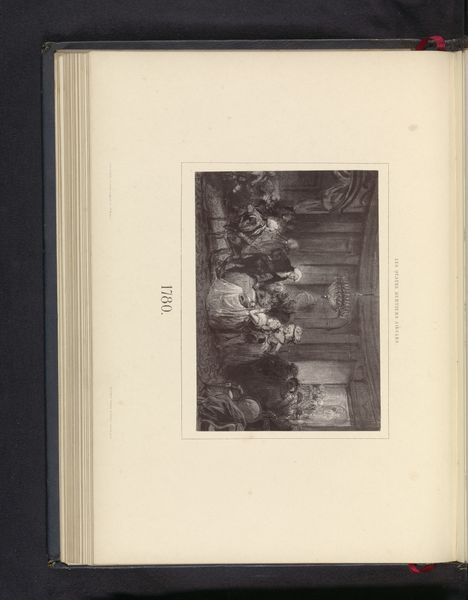
Groep dansers in het Syrische deel van de Wereldtentoonstelling van Antwerpen in 1894 1894
0:00
0:00
photography, albumen-print
#
portrait
#
photography
#
orientalism
#
genre-painting
#
albumen-print
Dimensions: height 153 mm, width 216 mm
Copyright: Rijks Museum: Open Domain
Curator: Here we have an albumen print by Charles Bernhoeft, titled "Group of Dancers in the Syrian Section of the Antwerp World Fair, 1894." Editor: The sepia tones are very strong, evoking a dreamlike tableau. You know, like peering into a faded postcard of a long-lost memory. But what exactly are we looking at? Is this an organic capturing, or a more stage-managed construction? Curator: A bit of both, I think. It’s presented as a scene within the Syrian section of the World's Fair. These international expositions were hugely popular, bringing the world, or at least representations of it, to European audiences. Editor: So a construction, a curated display of "Syria," and then constructed again through photography? Look at the textures—the rich fabrics hanging behind the group, the patterned garments. What was the process involved in creating these surfaces, these costumes? Was there a conscious crafting of what materials "meant?" Curator: Exactly. It's Bernhoeft interpreting and framing this already curated presentation. He’s playing with Orientalist tropes prevalent at the time. The "exotic" East presented for Western consumption. These fairs offered a glimpse, often filtered, of other cultures. I am struck, though, with the subjects gazes; some of the subjects seem defiant in looking at the camera lens, almost like they see through the facade of the lens. Editor: Which gets me wondering about labor and material value again! Who spun these threads, wove those patterns, and at what cost, both human and material? Were the "Syrian" carpets in the backdrop even manufactured in Syria? Did these objects eventually go to another owner or end up back at home? The photo makes me curious about their journeys. Curator: These fairs, while problematic, did offer a stage and exposure. Bernhoeft captured a fragment of that stage and offered it up for another viewing, from his perspective, so many decades ago. In that act, he offered something for us to now see through different eyes. Editor: Precisely. Looking at these artifacts, tracing their making, offers a chance to see both the labor of the past and reflect critically on the layers of power dynamics at play.
Comments
No comments
Be the first to comment and join the conversation on the ultimate creative platform.
